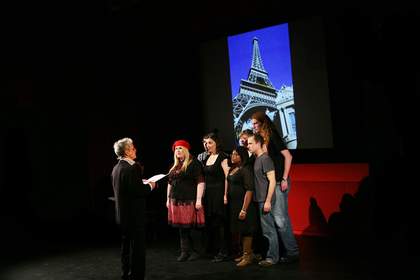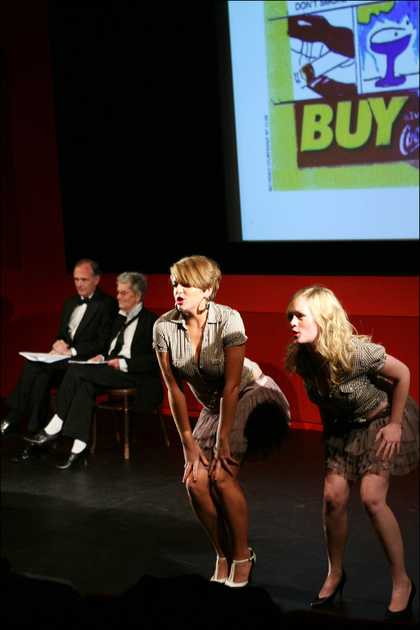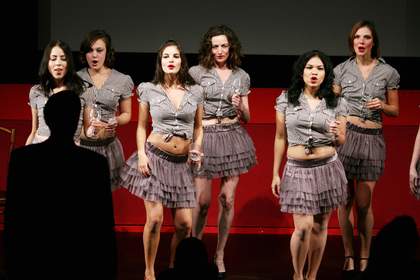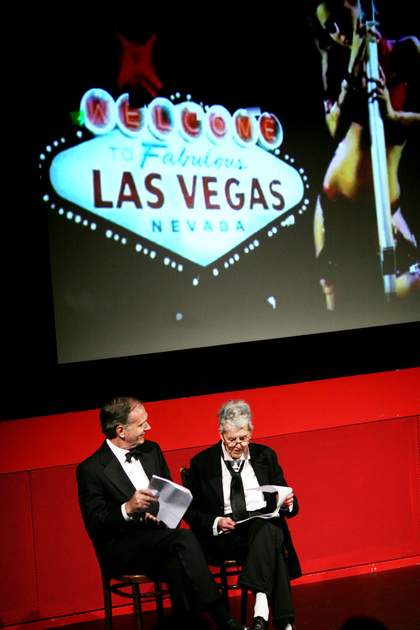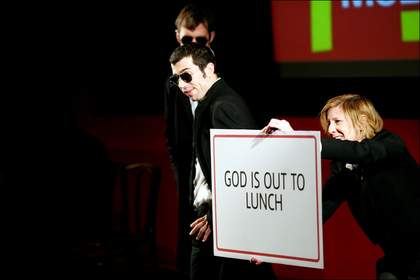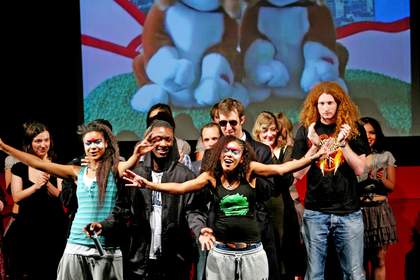Spinoza in Las Vegas was a performance at Tate Modern as part of the Saturday Live programme in November 2008 by the American artist Elaine Sturtevant, who worked under the name Sturtevant. In this work, Sturtevant resituated the seventeenth-century Dutch philosopher Baruch Spinoza in twenty-first-century Las Vegas. Spinoza, played by Sturtevant, was thrown into an entirely new context, where his rationalist philosophy was at odds with the excess of spectacle and consumption. The philosopher’s encounters with a cast of contemporary characters, opened up a space of mutual critique, in which Spinoza’s austerity was tested alongside Las Vegas excess.
By playing the character of Spinoza, Sturtevant was able to get beneath the surface of his theories and consider what they could tell us about the society in which we live. This act of repetition is characteristic of Sturtevant’s work, which was often concerned with issues of originality and authorship. Across photography, sculpture, painting and performance she remade artworks by other artists including Jasper Johns, Andy Warhol and Marcel Duchamp.
The performance comprised a dialogue between two characters: Sturtevant/Spinoza and the Ventriloquist, whose dummy also participated in the conversation. The two performers were seated next to one another on the raised stage, while a series of two-dimensional images were projected behind them. These images provided scenery but also reiterated the spectacular nature of the city and its overexposure in popular culture. Representations of Las Vegas’s iconic electric signs, pictures of brands like Coca-Cola and of slot machines accompanied by the artificial sound of falling money, were juxtaposed with images of Spinoza’s portrait and writing desk. This indicated the rupture between them – not only through the dislocation of different times and places but also through different understandings of culture.
During the conversation, Spinoza and the Ventriloquist were repeatedly interrupted by other characters, including a chorus line of young women, ‘rappers’ lip-syncing to songs by Ludacris, a pair of FBI agents and a drag queen, dressed in an extravagant ball gown, who serenaded Spinoza from a pink, fluffy moon with a rendition of Frank Sinatra’s Fly Me to the Moon. At one point, people planted in the audience encouraged everyone to participate in a karaoke rendition of It’s a Wonderful World with the lyrics projected on the screen.
Throughout her career Sturtevant used repetition to create difference. Her aim was not to represent a historically accurate representation of Spinoza, or even to faithfully inhabit the character. Her work was less concerned with copying than resituating images, ideas and processes into different contexts.1
In Spinoza in Las Vegas, Sturtevant used the act of role-playing – an embodied example of repetition – to explore the nature of appearance and to encourage her audience to question what they were seeing. This was heightened by moving the Spinoza character out of time and place, therefore demonstrating for the audience that a repetition is never just a copy and that as its context changes, so does its meaning – both for Sturtevant role-playing as Spinoza and for the audience members witnessing the transposition. But the piece was also reflexive, because in the dialogue the characters discussed how knowledge can be a tool to cut into society and art, while the performance artwork provided the means to deliver that knowledge.2
In Spinoza in Las Vegas Sturtevant enacted this procedure: Spinoza’s philosophies as knowledge, acted as a lens through which to view society, while the performance became the tool for practicing the critique.
Acatia Finbow
October 2015


